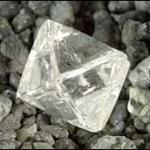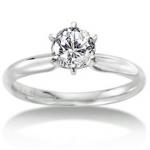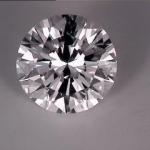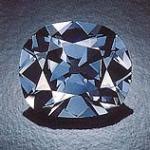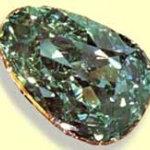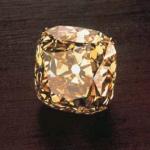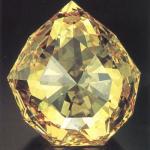
Classes- Alabama
- Alaska
- Arizona
- Arkansas
- California
- Colorado
- Connecticut
- Delaware
- Florida
- Georgia
- Hawaii
- Idaho
- Illinois
- Indiana
- Iowa
- Kansas
- Kentucky
- Louisiana
- Maine
- Maryland
- Massachusetts
- Michigan
- Minnesota
- Mississippi
- Missouri
- Montana
- Nebraska
- Nevada
- New Hampshire
- New Jersey
- New Mexico
- New York
- North Carolina
- North Dakota
- Ohio
- Oklahoma
- Oregon
- Pennsylvania
- Rhode Island
- Tennessee
- Texas
- Utah
- Vermont
- Virginia
- Washington
- West Virginia
- Wisconsin
- Wyoming
| Structure : Cubic Hardness : 10 Specific Gravity : 3.52 Refractive index : 2.42 Doubly Refracting (bi-refraction) : None Diamond is, without question, the most prized gemstone on the face of the Earth. It is the hardest natural mineral known to man, being a 10 at the top of Moh's Scale of Hardness. put info about diamond formations & pipes (Kimberley) here The name diamond actually comes from the Greek word adamas, which means unconquerable, or impenetrable. We use the word adamantine mostly to describe the luster of different gemstones, as comparable to the diamond. Diamond can be cleaved or broken, by a sharp blow, but it can only be cut with another diamond, or diamond dust. It is commonly used for engagement rings and wedding rings, possibly due to its ability to resist scratching, its ability to stand up to daily wearing and its high degree of luster and fire. The 4 C's Diamonds are graded according to their color, clarity, cut, and carat weight - the four C's. The following is a reference for the color grading of diamonds. COLOR D, E and F - near colorless. Highest jewelry grade. G, H, I and J - white. K, L and M- faint yellow N through R - very light yellow S through Z - light yellow Beyond Z - Fancy When we speak of fancy diamonds, we are speaking primarily of colors like red or pink, orange, yellow, green, blue and violet colored diamonds. Of course there are the Champagne or Cognac colored diamonds, and the black diamonds as well, which may be more affordable. Diamonds like the Hope Diamond with its brilliant blue, the Dresden with its emerald green, the Tiffany with its radiant yellow-orange, and the mysterious and long missing yellow Florentine are historical examples of fancy colored diamonds. In fancy diamonds, the saturation and rarity of color influence the price significantly, as well as the size and history. Today, one must be careful because many of the colored diamonds have been colored through irradiation. CLARITY Gemstone clarity is a measure of the purity of both the interior and exterior of a gemstone. The gemstone is checked for imperfections or inclusions, and given a grade according to the abundance or absence of those imperfections or inclusions. The grading scale is as follows: IF - Internally Flawless - Transparent & free of inclusions at 10x magnification. VVS 1 - Very Very Slightly Included - Very few and very slight inclusions at 10x magnification. VVS 2 - Very Very Slightly Included - Very few and very slight inclusions at 10x magnification. VS 1 - Very Slightly Included - Difficult to find slight inclusions at 10x magnification. VS 2 - Very Slightly Included - Difficult to find slight inclusions at 10x magnification. SI 1 - Slightly Included - Small inclusions readily viewable at 10x magnification. SI 2 - Slightly Included - Small inclusions readily viewable at 10x magnification. I 1 - Included 1 - Inclusions easily seen at 10x magnification, but does not detract from brilliance. I 2 - Included 2 - Larger or more inclusions seen by naked eye, slightly diminishing brilliance. I 3 - Included 3 - Larger or more inclusions seen by naked eye, greatly diminishing brilliance. CUT When diamonds were initially starting to be used as ornaments or jewelry, they would often be left in their bipyramidal shape. Eventually this led to a corner - or tip - of the diamond crystal being removed, leaving a flattened surface. Through time and technological advances, the cut has become more sophisticated and shapely. There are many cuts, but typically most diamonds are cut in a variant of the following forms: Baguette, Round Brilliant, Princess, Emerald, Marquise, Trilliant, Pear or Oval. The cutting of a diamond is typically based upon the shape of the rough. When cutting a diamond, the cutter must determine what cuts the rough diamond will allow. From there they will determine the necessary angles, proportions, symmetry and overall dimensions of the crown (top), girdle (middle), and pavilion (bottom) of the final gem. Of course things can happen during cutting which can cause a deviation from the desired outcome. A well cut gem will have approximately 40 percent of its final carat weight in the crown, and 60 percent in the pavilion. One must be careful when purchasing gemstones in today's markets. In many cultures prices are driven by final carat weight of the cut stone. Cutters will facet stones in order to retain as much weight as possible, leaving longer pavilions and thicker girdles. These heavier gems quite often do not offer the brilliance and fire that a properly proportioned gem would display. The brilliance of a diamond can be lost from too deep of a pavilion, too thick of a girdle or improper facets. This causes the light passing through the stone to be lossed by refracting out of the stone through the pavilion and not the crown. CARAT WEIGHT |
- Birth Stone Gems
- Wedding & Anniversary Gems
- How To Guides
- Fireable Gems
- Nonprofits and Guilds
- Gem Show
- Gem Stone Information
- ·Abalone
- ·Achroite (Tourmaline)
- ·Agate ( Chalcedony)
- ·Alexandrite
- ·Almandine ( Garnet )
- ·Amber
- ·Amethyst ( Quartz)
- ·Ammolite
- ·Andalusite
- ·Andradite Garnet
- ·Apatite
- ·Aquamarine ( Beryl )
- ·Aventurine ( Quartz )
- ·Azurite
- ·Benitoite
- ·Bloodstone ( Chalcedony )
- ·Brown Quartz ( Smokey Quartz )
- ·Calcite
- ·Carnelian ( Chalcedony )
- ·Cassiterite
- ·Celestine
- ·Cerussite
- ·Chalcedony
- ·Chatoyant Quartz
- ·Chrysoberyl
- ·Chrysocolla
- ·Chrysoprase (Chalcedony)
- ·Citrine ( Quartz )
- ·Coral
- ·Danburite
- ·Diamond
- ·Diopside
- ·Dioptase
- ·Dravite ( Tourmaline)
- ·Emerald ( Beryl )
- ·Enstatite
- ·Epidote
- ·Euclase
- ·Fire Agate (Chalcedony)
- ·Fluorite
- ·Gold
- ·Goshenite (Beryl)
- ·Grossular Garnet (Tsavorite Garnet)
- ·Gypsum
- ·Heliodor ( Beryl )
- ·Hematite
- ·Hessonite (Grossular Garnet)
- ·Imperial Topaz
- ·Indicolite ( Tourmaline)
- ·Iolite
- ·Ivory
- ·Jadeite
- ·Jasper (Chalcedony)
- ·Jet
- ·Kornerupine
- ·Kunzite
- ·Kyanite
- ·Labradorite
- ·Lapis Lazuli ( Lazurite)
- ·Lazulite
- ·Malachite
- ·Meerschaum
- ·Microcline
- ·Milky Quartz
- ·Moonstone
- ·Morganite ( Beryl)
- ·Nephrite ( Jade)
- ·Obsidian
- ·Oligoclase
- ·Onyx
- ·Opal
- ·Orthoclase
- ·Padparasha ( Corundum)
- ·Pearl
- ·Peridot
- ·Pink Topaz ( Mercury Myst Vapor )
- ·Plasma ( Chalcedony)
- ·Prase ( Chalcedony )
- ·Prehnite
- ·Pyrite
- ·Pyrope ( Garnet )
- ·Rock Crystal ( Quartz )
- ·Rubellite ( Tourmaline)
- ·Ruby ( Corundum)
- ·Sapphire ( Corundum)
- ·Sardonyx ( Chalcedony)
- ·Scapolite
- ·Schorl (Tourmaline)
- ·Shell
- ·Spessarite (Garnet)
- ·Sphalerite
- ·Spinel
- ·Spodumene (Hiddenite - Triphane)
- ·Tanzanite (Zoisite)
- ·Tektites ( Moldavite )
- ·Tiger Eye
- ·Titanite (Sphene)
- ·Topaz
- ·Turquoise
- ·YAG (Garnet)
- ·Zircon
